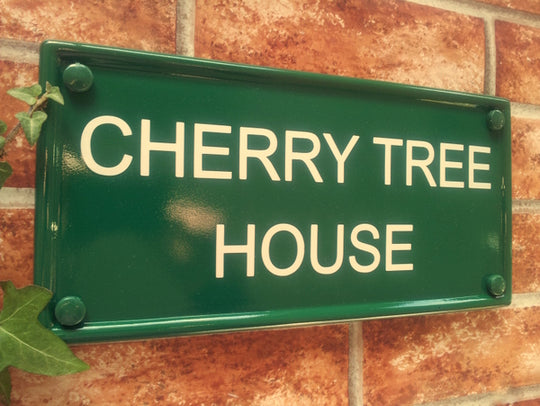HISTORY OF HOUSE NAMES
History of the tradition of house names in the UK

The custom of naming one’s home began with the English gentry naming the properties on their estates and was based on who the property belonged to or where it was located. For example, the Earl of Eddington could have properties named Eddington Manor, Eddington Lodge, Eddington Hall, Eddington Gate House and Eddington Cottages. Property naming then became popular with tradesmen naming their properties based on their occupation. For example, The Forge, The Dairy, The Bakery, The Mill House, The Stables and Wool Cottage.
The practice of naming property became desirable within the general population with property owners naming their homes based on the most prominent and cherished features of their property and land. Some examples based on these features are The Orchard, Rose Cottage, Three Oaks, Honeysuckle Cottage, The Willows, Holly Lodge, The Pines, Primrose Cottage, Yew Tree House and Red Tiles.
In contemporary times house naming has evolved from many different inspirations. The view from a property is often the inspiration for a house name as in Meadow View, Sea Vista, Hillview, Ocean View and Lake View House. Inspiration from the previous usage of the property has resulted in The Old Bakery, The Old Barn, The Forge, The Old Vicarage and The Old Dairy.
Some home owners name their house after areas of beauty or places they have had wonderful experiences such as Snowden, Ventnor, Taormina, Buttermere, Niagara, Saint Lucia and Santorini. Homes are frequently named by the wild animals and birds that are seen in the locality including The Squirrels, Badgers Rest, Four Foxes, The Swallows, Robins Rest, Nightingale House, Cuckoo Nest, and The Jays. House names that reflect the home owner’s sentiments about their home such as Haven and Serendipity or The Mad House have also become quite popular.
However you decide to personalise your home whether a simple house number, a house name, a house number with an address line or a combination of all three and with or without a hand painted picture, we are here to help individualise your home with style. All of our house signs can be personalized as individually as you want with choices in materials, shape, font and colour.
HOUSE NUMBERING
Prior to the numbering system introduced in 1765, properties throughout the British mainland had just house names for identification of the property which worked well as every local person knew the families and their houses and locations within their normal daily surroundings. As Britain became more industrialised many families flocked to urban industrial areas for work. It became more difficult for all these new coming non locals to identify properties simply by knowing the families or property names anymore so a solution needed to be found for identifying homes and properties.
In 1765 an Act of Parliament introduced street numbering. Buildings were allocated a number followed by the name of the road to make it easier to identify the location of a property. House Number one and all other odd numbers were normally allocated to the left side of the road. Number two and all other even numbers were allocated to the right side. Street numbering was usually organised as number one and two being closest to the centre of the town and the highest number being the furthest away.

